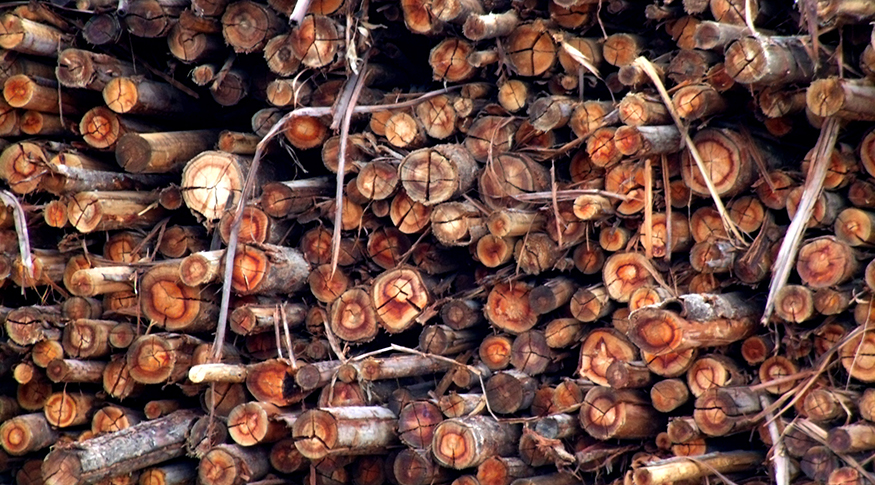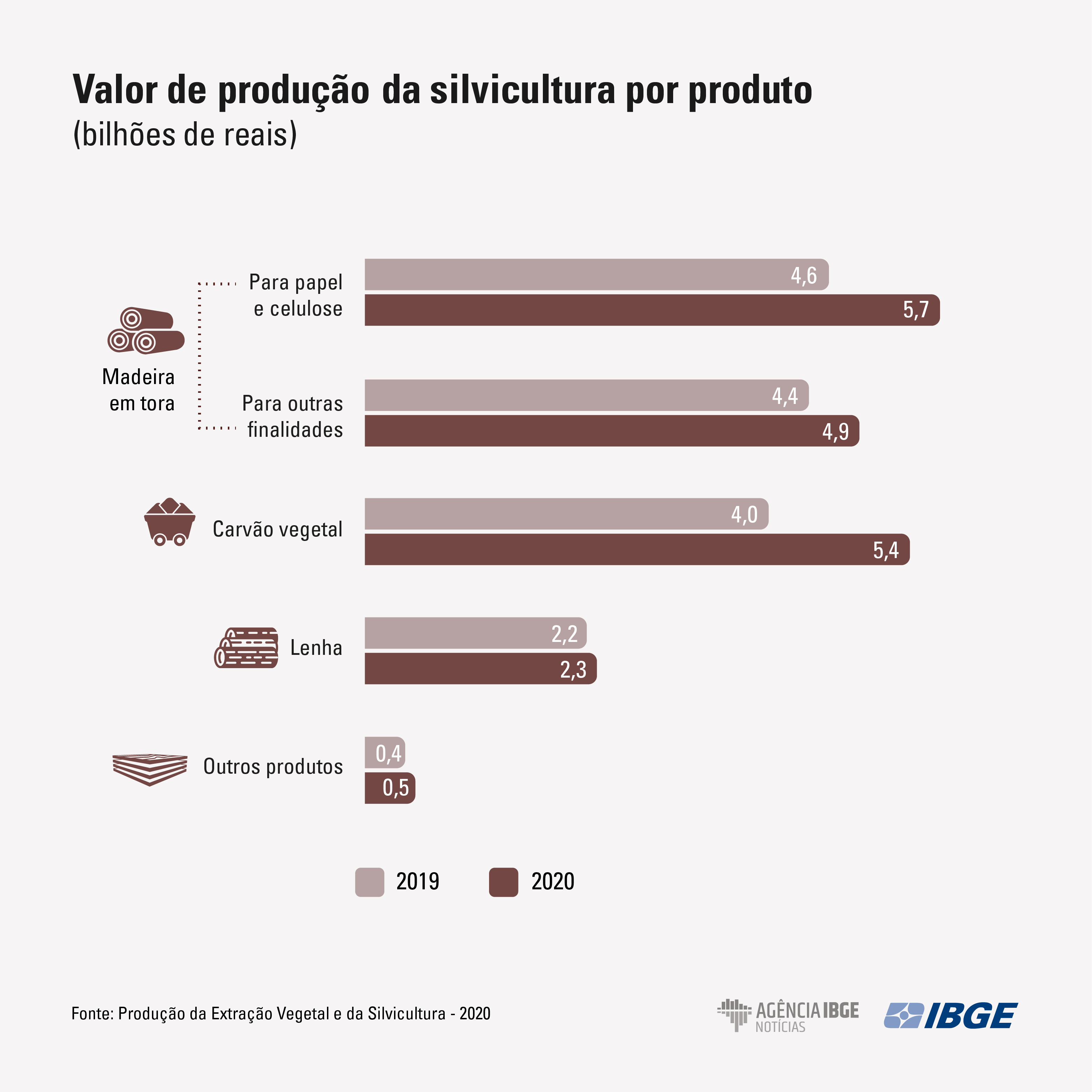PEVS
Exports drive increase of value of silviculture production
October 06, 2021 10h00 AM | Last Updated: October 08, 2021 01h55 AM

After a decrease of 5.0% in 2019, value of silviculture production (planted forests) resumed increase, with an increase of 21.3%, and reached R$ 18.8 billion in 2020. Data come from the survey Forestry Activities (PEVS) 2020, released today (6) by the IBGE.
The result of silviculture is considered a recovery for this activity, with a highlight to the increase in the value of production of charcoal (37.8%) and production of logged wood for pulp and paper (25.6%). According to the manager of agricultural surveys, Carlos Alfredo Guedes, there was great demand and a subsequent rise of prices in 2020, in a scenario in which Brazilian products have become attractive to the foreign market, due to the favorable currency exchange.

Production of logged wood for pulp and paper, which had dropped 14.2% in 2019, increased 10.7% and closed the year in the seventh position in the ranking of total exports from Brazil, according to the Secretariat of Foreign Trade (Secex). With an increase of 25.6%, the value of 25.6%, value of production reached R$ 5.8 billion and still represents the highest value of silviculture.
The increase of charcoal, second item in terms of value of production of silviculture, with R$ 5.4 billion, was due to the rise of prices, since production increased by only 2.7%. Due to the increase of demand of China for pig iron, steel industry, main consumer market for charcoal, was aimed at exports.
“Most silviculture products are exported. With the depreciation of the real against the dollar, it is cheaper for countries to buy products from Brazil. The currency issue has an effect on value of production, because the rise of dollar makes the product more expensive in the domestic market,” Mr. Guedes explains.
In wild crop harvesting, a highlight is the increase of value of pequi (122.7%) and pinhao (44.5%))
Among wild crop harvesting products, acai and yerba mate remain on top of the ranking. With an output of 220.5 thousand metric tons, acai recorded an increase of 17.8% in value of production, which reached R$ 694.3 million. This product accounts for the biggest contribution (46.3%) in terms of value, to this group. Value of yerba mate reached R$ 559.7 million, an increase of 38.8% in comparison with 2019.
On top of the value of production ranking is Limoeiro do Ajuru, in Pará, main national producer of wild crop acai, accounting for 19.5% of the national production. In the second position is Colniza, in Mato Grosso, leader in terms of logged wood extraction. Cruz Machado, in Paraná, is the main producer of yerba mate and concentrates 15.5% of the national total, followed by São Mateus do Sul and Bituruna.

Nevertheless, the highlight was pequi, with an increase of 127.9% in volume and 122.7% in value of production. The main producing states are Minas Gerais, which accounts for 51.8% of the national volume, and Tocantins, with 39.7%. “O pequi passou a ter outras formas de comercialização agregando valor: polpa, conserva, castanha, óleo, farinha, etc. Isso fez com que a cultura atingisse novos mercados”, comenta Alfredo Guedes.
The researcher also speaks about another factor: the policy of guaranteed minimum prices for products from sociobiodiversity, which stimulates harvesting. Pinhao, a highlight among non-wood products from wild crop harvesting, is also part of this governmental program. It recorded an increase in both volume (13.1%), and value (44.5%).
About the survey
PEVS 2020 presents information about area, amount produced and value of production considering planted forests (silviculture) and natural vegetation resources (wild crop harvesting).
Wild crop harvesting encompasses 37 items, with a highlight to wood products, food, waxes and oilseeds. Silviculture covers seven products, including charcoal, firewood, wood log and resin. PEVS present information starting from municipal level.




















